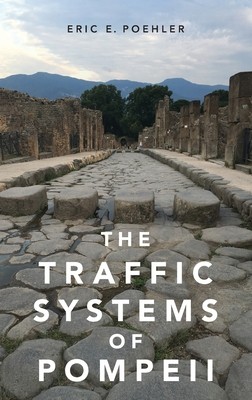
- Išsiųsime per 12–18 d.d.
- Autorius: Eric E Poehler
- Leidėjas: Oxford University Press, USA
- Puslapiai: 288
- ISBN-10: 0190614676
- ISBN-13: 9780190614676
- Formatas: 15.5 x 23.9 x 2.8 cm, kieti viršeliai
- Kalba: Anglų
- Extra -15 % nuolaida šiai knygai su kodu: ENG15
Atsiliepimai
Aprašymas
The Traffic Systems of Pompeii is the first sustained examination of the development of road infrastructure in Pompeii-from the archaic age to the eruption of Mt. Vesuvius in 79 CE-and its implications for urbanism in the Roman empire. Eric E. Poehler, an authority on Pompeii's uniquely preserved urban structure, distills over five hundred instances of street-level "wear and tear" to reveal for the first time the rules of the ancient road. Through a thorough, yet lively, investigation of every facet of the infrastructure, from the city's urban grid and the shape of the streets to the treatment of their surfaces and the individual elements of construction, the intricacies of the Pompeian traffic system and the changes to its operation over time emerge in vivid detail. Though archaeological expertise forms the backbone of this book, its findings have equally important historical and architectural implications. Later chapters probe how the street design and infrastructure affectedsocial roles and hierarchies among property owners in Pompeii, illuminating the economic forces that push and pull upon the shape of urban space. The final chapters set the road system into its broader context as one major infrastructural and administrative artifact of the Roman empire's deeply urban culture. Where does Pompeii's system fit within the history of Roman traffic control? Is it unique for its innovation, or only for the preservation that permitted its discovery? Poehler marshals evidence from across the Roman world to examine these questions. His measured and thoroughly researched answers make The Traffic Systems of Pompeii a critical step forward in our understanding of infrastructure in the ancient world.
EXTRA 15 % nuolaida su kodu: ENG15
Akcija baigiasi už 5d.11:34:45
Nuolaidos kodas galioja perkant nuo 10 €. Nuolaidos nesumuojamos.

- Autorius: Eric E Poehler
- Leidėjas: Oxford University Press, USA
- Puslapiai: 288
- ISBN-10: 0190614676
- ISBN-13: 9780190614676
- Formatas: 15.5 x 23.9 x 2.8 cm, kieti viršeliai
- Kalba: Anglų Anglų
social roles and hierarchies among property owners in Pompeii, illuminating the economic forces that push and pull upon the shape of urban space. The final chapters set the road system into its broader context as one major infrastructural and administrative artifact of the Roman empire's deeply urban culture. Where does Pompeii's system fit within the history of Roman traffic control? Is it unique for its innovation, or only for the preservation that permitted its discovery? Poehler marshals evidence from across the Roman world to examine these questions. His measured and thoroughly researched answers make The Traffic Systems of Pompeii a critical step forward in our understanding of infrastructure in the ancient world.


Atsiliepimai